
- •The ARM Architecture
- •Agenda
- •Founded in November 1990
- •ARM Partnership Model
- •ARM Powered Products
- •Intellectual Property
- •Agenda
- •Data Sizes and Instruction Sets
- •Processor Modes
- •The ARM Register Set
- •Register Organization Summary
- •The Registers
- •Program Status Registers
- •Program Counter (r15)
- •Exception Handling
- •Development of the
- •Agenda
- •Conditional Execution and Flags
- •Condition Codes
- •Examples of conditional execution
- •Branch instructions
- •Data processing Instructions
- •LSL : Logical Left Shift
- •Using the Barrel Shifter:
- •Immediate constants (1)
- •Immediate constants (2)
- •Loading 32 bit constants
- •Multiply
- •Single register data transfer
- •Address accessed
- •Pre or Post Indexed Addressing?
- •LDM / STM operation
- •PSR Transfer Instructions
- •ARM Branches and Subroutines
- •Thumb
- •Agenda
- •Example ARM-based System
- •AMBA
- •Agenda
- •The RealView Product Families
- •ARM Debug Architecture
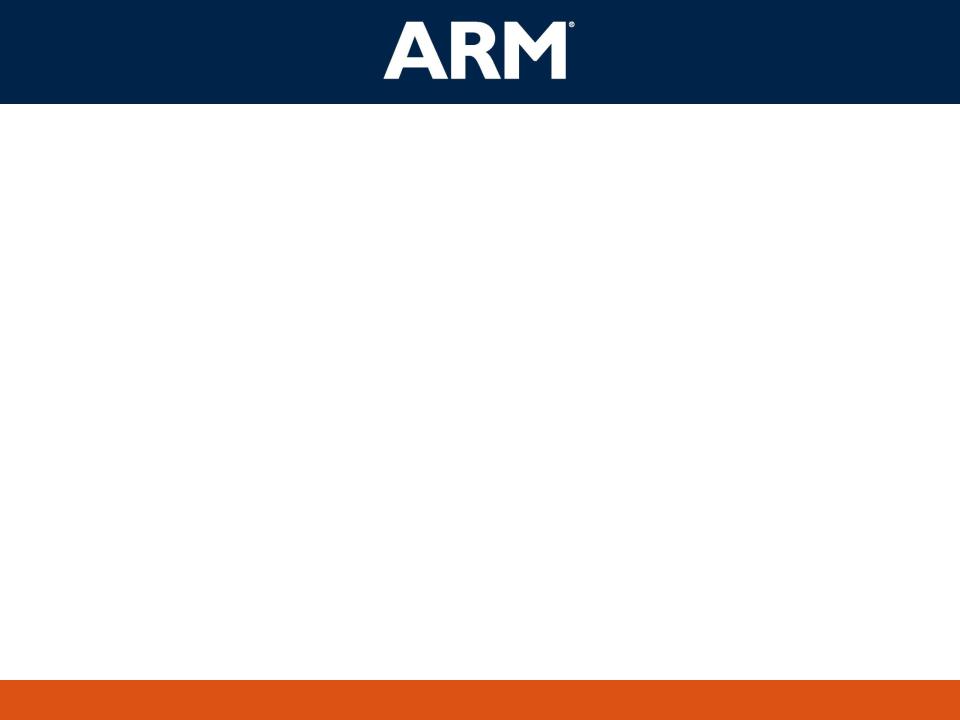
The ARM Architecture
T H E A R C H I T E C T U R E F O R T H E D I G I T A L W O R L D

Agenda
Introduction to ARM Ltd
Programmers Model Instruction Set System Design Development Tools
39v10 The ARM Architecture |
2 |
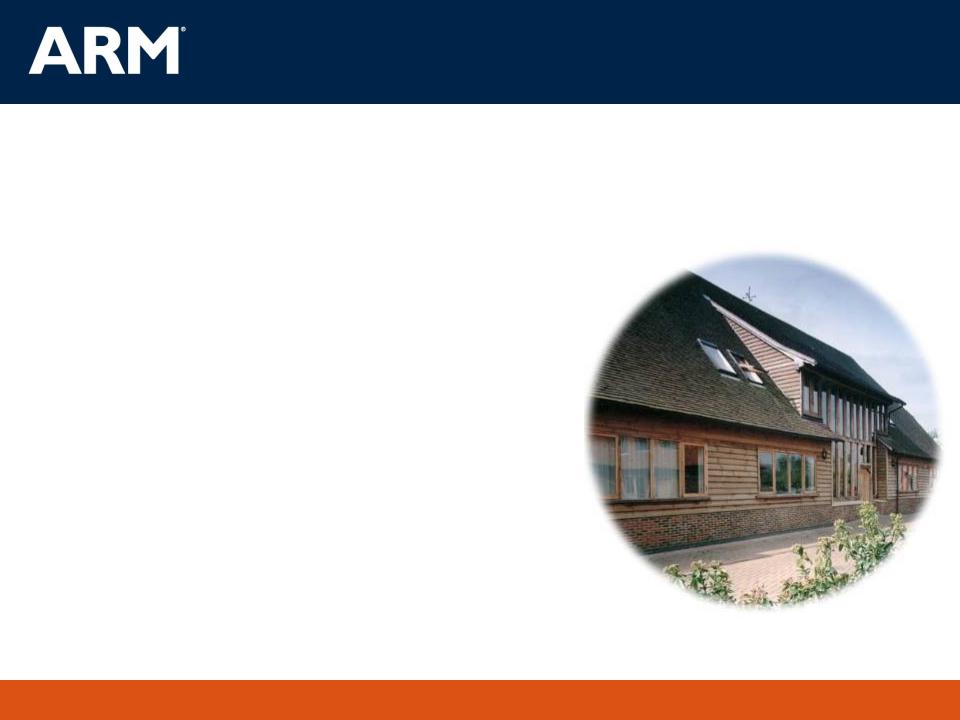
Founded in November 1990
Spun out of Acorn Computers
Designs the ARM range of RISC processor cores
Licenses ARM core designs to semiconductor partners who fabricate and sell to their customers.
ARM does not fabricate silicon itself
Also develop technologies to assist with the design-in of the ARM architecture
Software tools, boards, debug hardware, application software, bus architectures, peripherals etc
39v10 The ARM Architecture
ARM Ltd
3
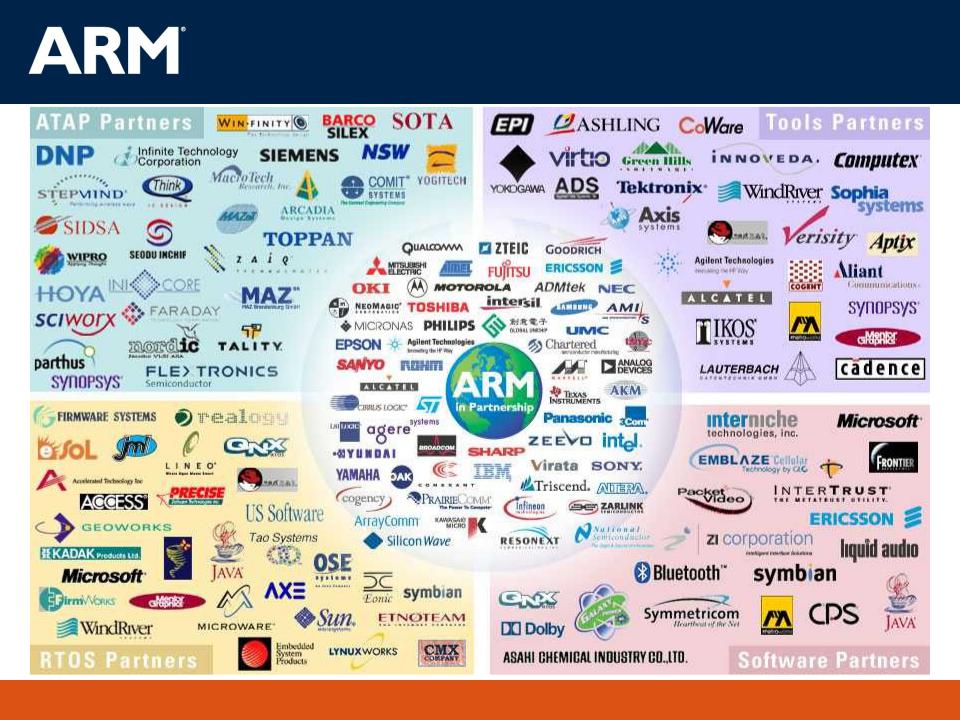
ARM Partnership Model
39v10 The ARM Architecture |
4 |
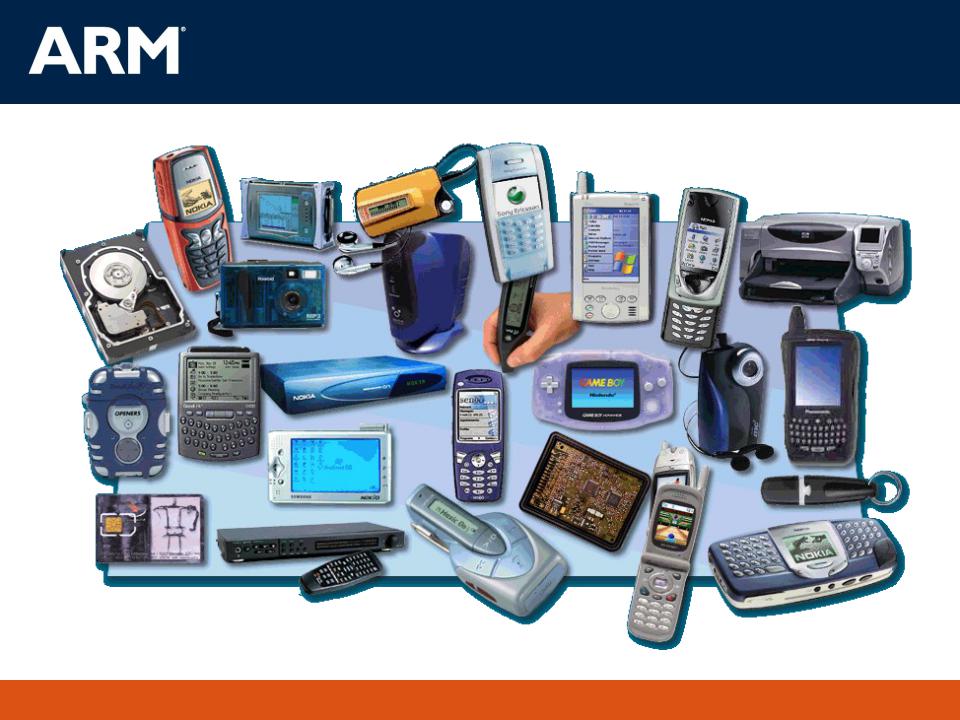
ARM Powered Products
39v10 The ARM Architecture |
5 |

Intellectual Property
ARM provides hard and soft views to licencees
RTL and synthesis flows
GDSII layout
Licencees have the right to use hard or soft views of the IP
soft views include gate level netlists
hard views are DSMs
OEMs must use hard views
to protect ARM IP
39v10 The ARM Architecture |
6 |

Agenda
Introduction to ARM Ltd
Programmers Model
Instruction Sets System Design Development Tools
39v10 The ARM Architecture |
7 |

Data Sizes and Instruction Sets
The ARM is a 32-bit architecture.
When used in relation to the ARM:
Byte means 8 bits
Halfword means 16 bits (two bytes)
Word means 32 bits (four bytes)
Most ARM’s implement two instruction sets
32-bit ARM Instruction Set
16-bit Thumb Instruction Set
Jazelle cores can also execute Java bytecode
39v10 The ARM Architecture |
8 |

Processor Modes
The ARM has seven basic operating modes:
User : unprivileged mode under which most tasks run
FIQ : entered when a high priority (fast) interrupt is raised
IRQ : entered when a low priority (normal) interrupt is raised
Supervisor : entered on reset and when a Software Interrupt
instruction is executed
Abort : used to handle memory access violations
Undef : used to handle undefined instructions
System : privileged mode using the same registers as user mode
39v10 The ARM Architecture |
9 |
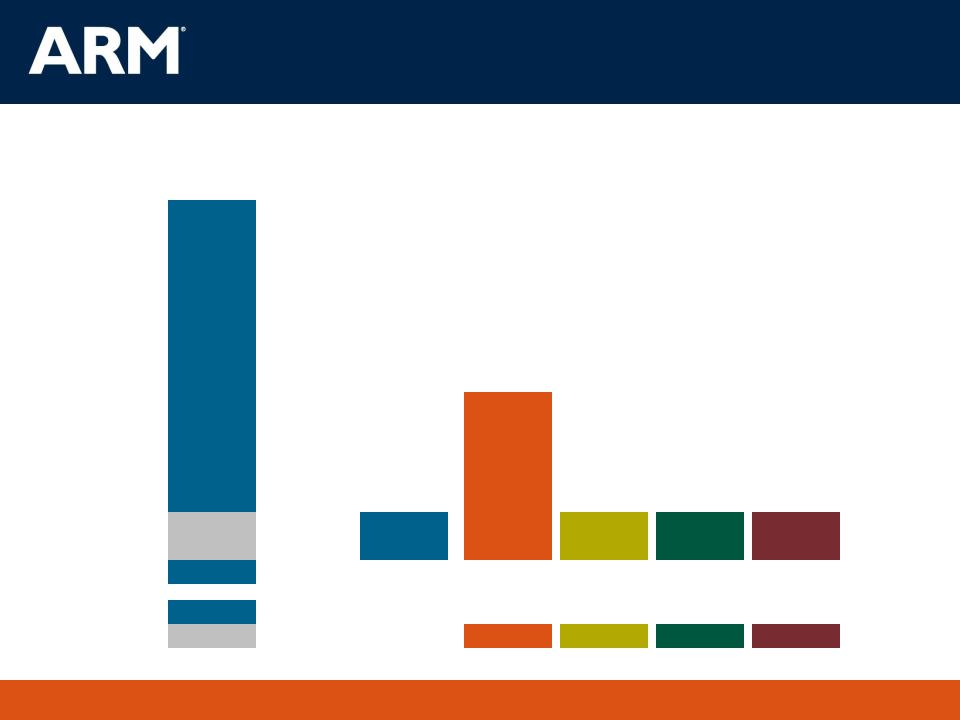
The ARM Register Set
Current Visible Registers
Abort Mode |
r0 |
|
|
|
|
|
|
|
|
|
|
|
|
|
r1 |
|
|
|
|
|
|
|
|
|
|
|
|
|
|
|
|
|
|
|
|
|
|
|
|
|
|
|
|
|
|
r2 |
|
|
|
Banked out Registers |
|||||||||
|
r3 |
|
|
|
||||||||||
|
r4 |
|
|
|
|
|
|
|
|
|
|
|
|
|
|
r5 |
|
User |
FIQ |
IRQ |
|
SVC |
Undef |
||||||
|
r6 |
|
|
|||||||||||
|
r7 |
|
|
|
|
|
|
|
|
|
|
|
|
|
|
r8 |
|
|
|
r8 |
|
|
|
|
|
|
|
|
|
|
r9 |
|
|
|
r9 |
|
|
|
|
|
|
|
|
|
|
r10 |
|
|
|
r10 |
|
|
|
|
|
|
|
|
|
|
r11 |
|
|
|
r11 |
|
|
|
|
|
|
|
|
|
|
r12 |
|
|
|
r12 |
|
|
|
|
|
|
|
|
|
|
r13 (sp) |
|
r13 (sp) |
|
r13 (sp) |
|
r13 (sp) |
|
r13 (sp) |
|
r13 (sp) |
|
|
|
|
r14 (lr) |
|
r14 (lr) |
|
r14 (lr) |
|
r14 (lr) |
|
r14 (lr) |
|
r14 (lr) |
|
|
|
|
r15 (pc) |
|
|
|
|
|
|
|
|
|
|
|
|
|
|
|
|
|
|
|
|
|
|
|
|
|
|
|
|
|
cpsr |
|
|
|
|
|
|
|
|
|
|
|
|
|
|
spsr |
|
|
|
spsr |
|
spsr |
|
spsr |
|
spsr |
|
|
|
39v10 The ARM Architecture |
|
|
|
|
|
|
|
|
|
10 |
||||
